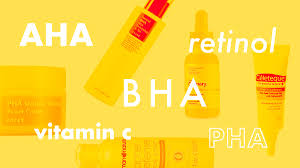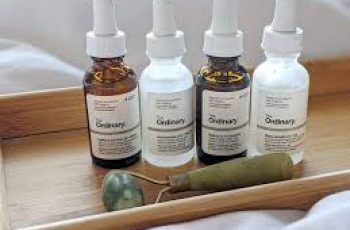
Can You Mix Vitamin C with AHA and BHA?
In the world of skincare, there’s often confusion surrounding the use of chemical exfoliants like AHAs and BHAs, and how they interact with other potent ingredients, such as Vitamin C.
If you’ve ever found yourself wondering, “Can you mix Vitamin C with AHA and BHA?”, you’re not alone.
It can be intimidating to incorporate multiple active ingredients into your skincare routine, especially when you’re not sure how they’ll work together.
But don’t worry—this article is here to clear up the confusion and guide you on how to safely and effectively mix these skincare powerhouses.
By the end of this post, you’ll have all the information you need to make informed decisions about your skincare routine.
What is Vitamin C?
Vitamin C, also known as ascorbic acid, has been a beloved skincare ingredient for decades. This powerful antioxidant has a range of benefits that make it a staple in many beauty routines.
Despite some early misconceptions about its stability, Vitamin C has evolved into one of the most trusted and effective skincare ingredients available today.
Recent innovations have led to more stable forms of Vitamin C that reduce irritation, ensuring that more people can reap its benefits without negative reactions.
Here are just a few of the many reasons Vitamin C is a skincare favorite:
Protection Against Free Radicals
Vitamin C is a strong antioxidant, meaning it helps protect the skin from environmental aggressors like pollution, UV radiation, and central heating.
These free radicals can damage skin cells and accelerate the signs of aging, but Vitamin C helps neutralize this damage.
Collagen Production
Vitamin C is crucial for the synthesis of collagen, the protein that keeps your skin firm and youthful.
It boosts the activity of enzymes necessary for collagen production, such as prolyl hydroxylase and lysyl hydroxylase.
Hyperpigmentation and Dark Spots
If you struggle with dark spots, pigmentation, or uneven skin tone, Vitamin C can be a game-changer.
It works by inhibiting melanin production, helping to fade hyperpigmentation and even out your complexion.
Glow and Radiance
Vitamin C’s brightening properties restore your skin’s natural glow, making it look fresher, healthier, and more vibrant.
With consistent use, you’ll notice a visible improvement in the overall appearance of your skin.
What Are AHAs?
AHAs, or alpha hydroxy acids, are water-soluble acids derived from fruits and milk.
They are primarily used for their exfoliating properties, and they come in several forms, such as glycolic acid, lactic acid, and mandelic acid.
AHAs are known for dissolving the bonds that hold dead skin cells together on the surface, allowing them to be sloughed off and revealing smoother, brighter skin beneath.
This process helps to remove dirt, bacteria, and impurities, which can improve skin texture and clarity.
The beauty of AHAs is that they provide a chemical exfoliation, which means there’s no need for harsh physical scrubs that can cause microtears or irritation.
AHAs are gentle yet effective, making them a favorite in many skincare routines. Here’s a closer look at the benefits:
Exfoliation
AHAs are excellent at removing the top layers of dead skin, making your skin look brighter and smoother.
Anti-Aging
Regular use of AHAs can help reduce the appearance of fine lines and wrinkles, leading to a more youthful-looking complexion.
Acne and Blemishes
Because AHAs help clear out clogged pores, they can also help reduce the formation of acne and other blemishes over time.
What Are BHAs?
BHAs, or beta hydroxy acids, are another class of chemical exfoliants, but they are oil-soluble rather than water-soluble like AHAs.
The most popular BHA is salicylic acid, which is renowned for its ability to penetrate deep into pores.
The oil-soluble nature of BHAs means they can go deeper into the skin compared to AHAs, making them particularly beneficial for those with oily or acne-prone skin.
They are excellent at breaking down oil and unclogging pores, which can reduce the occurrence of blackheads and breakouts.
Here’s how BHAs can benefit your skin:
Deep Cleansing
BHAs like salicylic acid can penetrate the skin more deeply than AHAs, helping to clear out clogged pores from the inside out.
Acne Treatment
BHAs are ideal for acne-prone skin due to their ability to target excess oil and keep pores clear of impurities that can lead to breakouts.
Soothing Effects
Unlike AHAs, which can sometimes cause irritation, BHAs have anti-inflammatory properties, making them ideal for those with sensitive or inflamed skin.
Can You Mix Vitamin C with AHA and BHA?
The short answer is yes, but there are a few important things to consider before combining these ingredients.
First and foremost, you need to know your skin type and ensure your skin can tolerate these potent ingredients together.
For those with oily skin, it might be easier to layer AHA, BHA, and Vitamin C since your skin can handle stronger formulas.
However, if you have dry or sensitive skin, this combination could lead to irritation or dryness, so you may want to alternate their use.
When mixing Vitamin C with AHAs and BHAs, it’s crucial to follow the rule of applying products from thinnest to thickest.
This ensures that each ingredient can penetrate the skin effectively without interference from thicker formulations.
For example, Vitamin C is often found in serums, while AHAs and BHAs are typically in exfoliating toners.
Here’s a step-by-step guide to mixing Vitamin C with AHA and BHA:
Start with an AHA or BHA Exfoliating Toner
Apply your exfoliating toner first, as AHAs or BHAs are usually in liquid form and are absorbed quickly. Choose a product with glycolic acid (AHA) or salicylic acid (BHA), depending on your skin’s needs.
Wait and Apply Vitamin C
After applying the toner, allow a brief wait—about 20-30 minutes—for the skin’s pH to return to normal before layering your Vitamin C serum on top. This will help minimize irritation.
Finish with Moisturizer
Use a moisturizer that contains hydrating ingredients like hyaluronic acid to lock in moisture and soothe any potential dryness or irritation caused by the acids.
What If You Experience Irritation?
If you experience any signs of irritation—such as redness, sensitivity, or burning—it’s best to stop using all three ingredients together.
Instead, you can alternate the use of Vitamin C and the acids by applying them on different days or at separate times of the day. For instance, use Vitamin C in the morning and your acids in the evening.
Can You Use BHA and Vitamin C Together?
Yes, you can use BHA and Vitamin C together, but you must be cautious of how your skin reacts to the combination.
Both of these ingredients are potent, and using them together can sometimes lead to dryness or irritation.
To ensure the best results, follow this routine:
Apply BHA (Salicylic Acid) First
After cleansing your skin, use a BHA exfoliating toner, and let it sit on your skin for about 20 minutes to allow your pores to fully open and prepare for the next step.
Wait Before Applying Vitamin C
Let the BHA settle into your skin for a while. Then, apply your Vitamin C serum. The waiting period between these products helps avoid irritation and allows each ingredient to work properly.
Finish with a Moisturizer
Use a moisturizer that contains hydrating agents like hyaluronic acid to replenish your skin and maintain moisture balance.
Can You Mix AHA and BHA with Hyaluronic Acid?
Absolutely! Hyaluronic acid is one of the most versatile and hydrating ingredients in skincare.
It works seamlessly with exfoliating acids like AHA and BHA to help lock in moisture and maintain the skin’s hydration.
When using AHAs and BHAs together, it’s crucial to follow with a hydrating product to prevent dryness.
Hyaluronic acid helps retain moisture in the skin, ensuring your skin barrier remains intact and protected.
Can You Use Glycolic Acid and Vitamin C Together?
Yes, glycolic acid (AHA) and Vitamin C can work beautifully together, especially if you’re targeting skin concerns like dullness, hyperpigmentation, or early signs of aging.
However, both are potent actives, so layering them requires caution.
To use these ingredients effectively, stagger their application. First, apply your glycolic acid toner, and wait for your skin’s pH to normalize.
Then, apply Vitamin C serum to brighten and protect your skin. Follow up with a moisturizer to keep the skin hydrated.
How to Use Salicylic Acid and Vitamin C Together?
Salicylic acid is different from glycolic acid due to its ability to penetrate deeper into the pores. This makes it an excellent choice for acne-prone skin.
However, combining it with Vitamin C requires a bit of strategy.
As with other actives, allow enough time between applications to avoid irritation. Apply salicylic acid first, wait, and then follow with Vitamin C.
This method ensures the best results while minimizing the risk of sensitivity.
Final Thoughts
Mixing Vitamin C with AHA and BHA can be highly effective if done correctly.
The key is understanding your skin’s needs and tolerances, applying ingredients in the right order, and giving your skin time to adjust between products.
If you experience irritation, it’s always a good idea to alternate your actives or consult a skincare professional.
With the right knowledge and approach, you can harness the full potential of these powerhouse ingredients to reveal brighter, smoother, and healthier skin. Happy layering!


